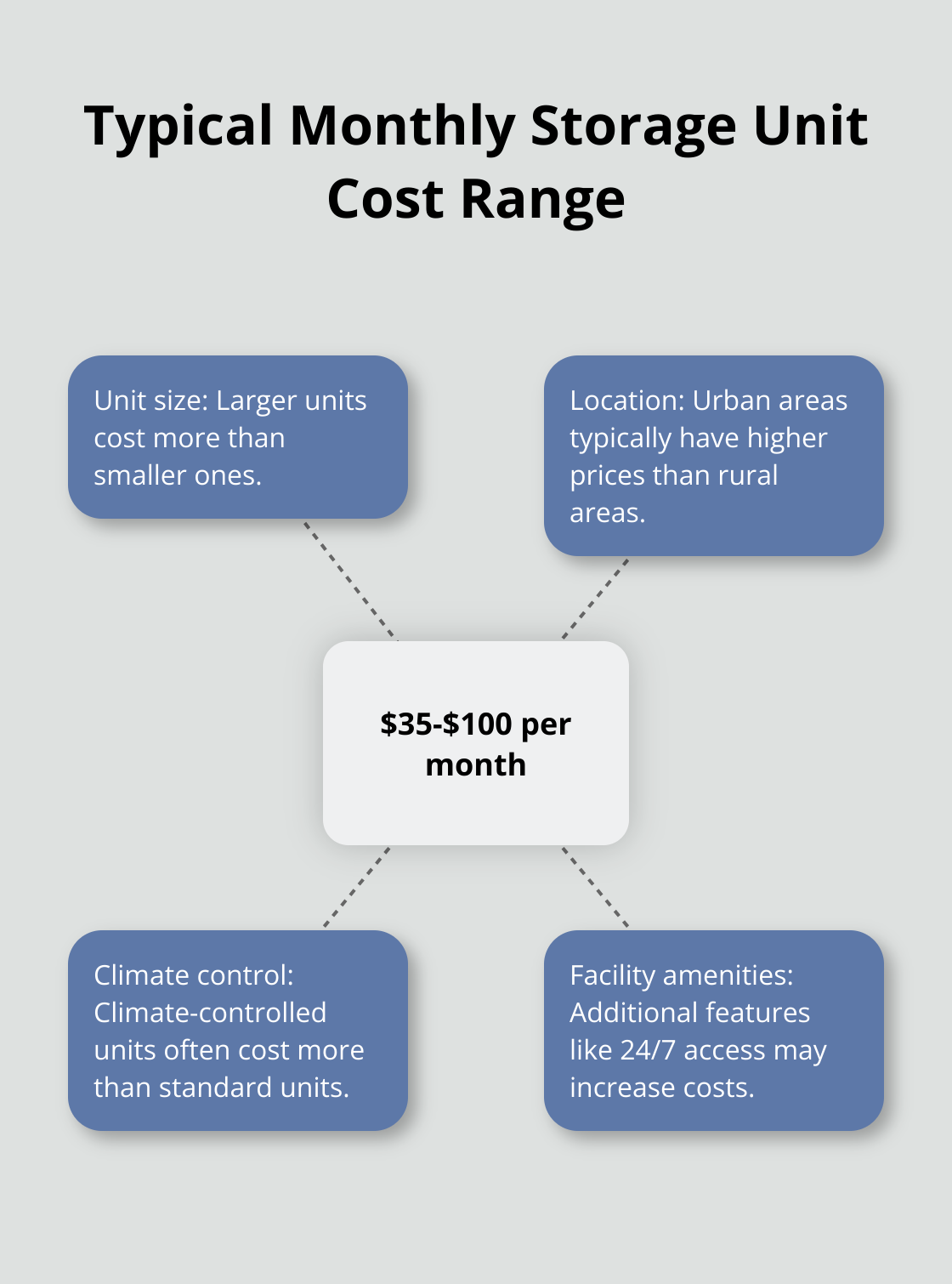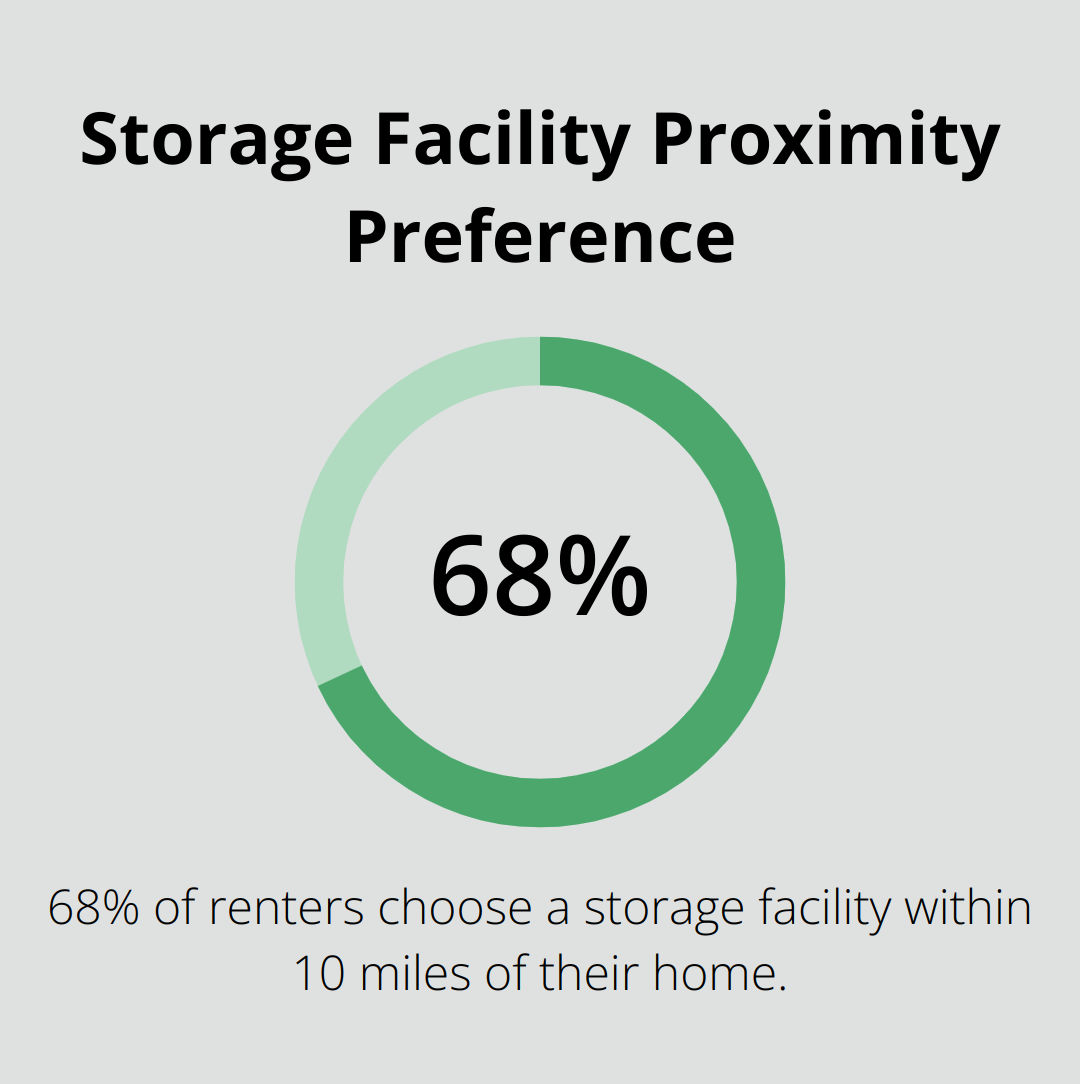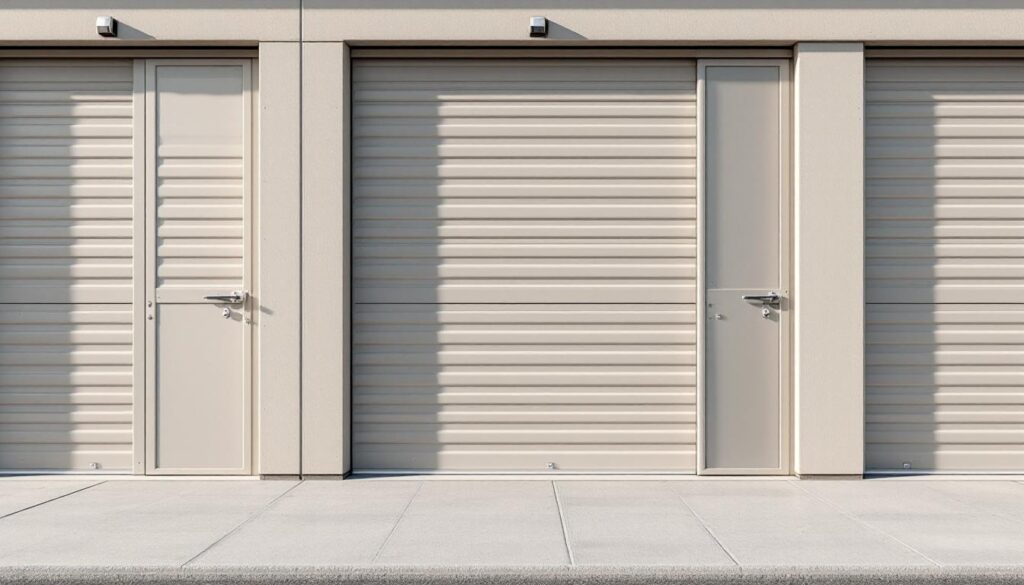Short-term storage unit rentals can be a lifesaver when you’re in a pinch. Whether you’re moving, renovating, or just need extra space temporarily, finding the right storage solution is key.
At Southbay Moving Systems, we understand the importance of secure and convenient short-term storage options. This guide will help you navigate the process of finding the perfect storage unit for your needs, ensuring your belongings are safe and accessible when you need them most.
What Size Storage Unit Do You Need?
Assessing Your Storage Needs
Choosing the right unit size for short-term storage can save you money and hassle. Take inventory of what you plan to store. A 5×5 unit (25 square feet) works well for small furniture pieces or about 10-15 boxes. For a one-bedroom apartment’s worth of items, a 10×10 unit (100 square feet) should suffice. Larger households or those with bulky items might require a 10×20 (200 square feet) or even a 10×30 (300 square feet) unit.
Pro tip: Measure your largest items and calculate the floor space they’ll occupy. This provides a baseline for the minimum unit size you’ll need.

Climate Control Considerations
Climate-controlled units offer protection from extreme weather, enhanced air quality, a barrier against dust, debris, and pests, humidity control, and preservation of stored items. These units are particularly important if you store:
- Electronics
- Wooden furniture
- Artwork
- Important documents
- Clothing
While climate-controlled units typically cost more than standard units, they provide vital protection against extreme temperatures and moisture damage.
Special Requirements
Consider how often you’ll need to access your items. If frequent access is necessary, look for facilities that offer 24/7 entry. Drive-up units, available at many locations, allow you to park directly in front of your unit for easy loading and unloading.
For businesses storing inventory or equipment, units with electrical outlets or facilities that accept deliveries on your behalf might be beneficial. Some storage facilities even offer workspaces where you can manage your stored items on-site.
Maximizing Space Efficiency
To make the most of your storage unit, use these space-saving techniques:
- Stack boxes and containers vertically (heaviest on the bottom)
- Disassemble furniture when possible
- Use vacuum-sealed bags for clothing and bedding
- Create an aisle for easy access to all items
Security Features to Look For
When selecting a storage unit, prioritize security. Look for facilities that offer:
- 24/7 video surveillance
- Gated access with individual codes
- Well-lit premises
- On-site management
These features will help ensure the safety of your belongings during their short-term stay.
As you move forward in your search for the perfect short-term storage solution, the next step involves researching local storage facilities that meet your specific needs.
How to Research Local Storage Facilities
Start Your Search Online
We at Southbay Moving Systems recommend you begin your search for local storage facilities online. Reserve a Storage Unit in Three Simple Steps. Step 1: Search for Facilities. Search by city or zip code to see available storage units in your area. These tools often allow you to filter results based on your specific needs, such as unit size, climate control, or 24/7 access.
Examine Customer Reviews
After you compile a list of potential facilities, examine customer reviews. Websites like Yelp, Google Reviews, and the Better Business Bureau offer valuable insights from previous renters. Focus on comments about cleanliness, security, customer service, and any unexpected fees. A few negative reviews are normal, but consistent complaints about specific issues should alert you to potential problems.
Compare Prices and Promotions
Storage unit prices can vary significantly, even within the same area. Create a spreadsheet to compare rates across different facilities. Include any promotional offers, such as first month free or discounted rates for longer-term rentals. Storage units typically cost around $35-$100 per month. The price of a storage unit is based on the unit size and is usually charged as a monthly rental fee.

Visit Facilities in Person
While online research provides a great starting point, an in-person visit offers invaluable information. Schedule tours at your top choices to assess the facility’s cleanliness, security measures, and overall condition. This also gives you an opportunity to speak with staff and evaluate their customer service. During your visit, ask about their pest control measures, insurance requirements, and any additional fees not mentioned online.
Review Rental Agreements
Before you commit to a facility, review the rental agreement thoroughly. Pay special attention to the terms regarding rent increases, late fees, and the facility’s right to auction your belongings if payments are missed. Some facilities offer month-to-month rentals (ideal for short-term needs), while others might require a minimum rental period.
As you complete your research on local storage facilities, the next step involves considering key factors that will influence your final decision. These factors will help you choose a storage solution that not only meets your immediate needs but also provides long-term satisfaction and peace of mind.
What Makes a Storage Facility Stand Out?
Location and Accessibility
The location of your storage unit significantly impacts its convenience. Choose a facility within a 15-20 minute drive from your home or workplace. This proximity ensures easy access when you need to retrieve or store items. A 2023 survey by the Self Storage Association revealed that 68% of renters select a facility within 10 miles of their home.

Many facilities now offer extended access hours, with some providing 24/7 entry. Check if the facility’s access hours match your schedule. For instance, if you work late, a facility with round-the-clock access might prove essential.
Security Measures
The security of your belongings should top your priority list. Look for facilities that employ multiple layers of security. A study by the National Self Storage Association found that facilities with comprehensive security measures experience 73% fewer break-ins compared to those with minimal security.
Key security features to look for include:
- 24/7 video surveillance
- Individually alarmed units
- Gated access with unique entry codes
- Well-lit premises
- On-site management during business hours
Ask about the facility’s track record with break-ins or theft. A reputable facility will provide transparency about their security measures and history.
Flexible Rental Terms and Payment Options
Short-term storage shines in its flexibility. Search for facilities that offer month-to-month lease agreements without annual contracts. This flexibility allows you to adjust your storage needs as your situation changes.
Many modern storage facilities now offer online account management and payment options. This convenience can save you time, especially if you’re storing items while traveling or during a busy move.
Some facilities might offer discounts for longer-term rentals or prepayment. While these can cut costs, ensure they align with your short-term needs. A survey by SpareFoot found that 42% of storage renters initially underestimate how long they’ll need their unit, so flexibility remains key.
Insurance Coverage
While most facilities prioritize security, accidents can happen. Many storage companies offer insurance options, but these policies often have limitations. Review these carefully and compare them with your existing homeowners or renters insurance.
According to the Insurance Information Institute, most homeowners and renters insurance policies provide some coverage for items in storage (typically 10% of your personal property coverage). However, this might not suffice for valuable items.
Consider additional coverage for high-value items. Some facilities partner with third-party insurers to offer comprehensive coverage options. Always read the fine print and understand what’s covered and what’s not.
The cheapest option doesn’t always provide the best value. Weigh the costs against the level of security, convenience, and peace of mind each facility offers. For instance, climate controlled facilities can provide more security and space than traditional self-storage options.
Final Thoughts
Finding the right short-term storage unit rental requires careful consideration and thorough research. You must assess your storage needs, explore local options, and evaluate key factors like location, security, and flexibility. The benefits of short-term storage are numerous, offering a temporary haven for your belongings during transitions, renovations, or when you simply need extra space.
You should prioritize facilities that offer a balance of security, convenience, and flexibility. Climate-controlled units can provide essential protection for sensitive items (although they often cost more). You must also consider the importance of insurance coverage to safeguard your possessions against unforeseen events.
We at Southbay Moving Systems understand the intricacies of short-term storage needs. Our storage facility provides a safe environment for your belongings, whether you’re in the midst of a residential move or need temporary storage for your business inventory. We strive to make your storage experience as stress-free as possible.




